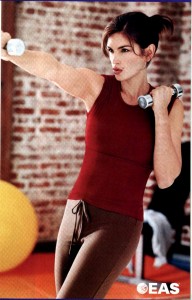Weight Loss & Diabetic Diets: Lose Weight. Feel Great.

Weight loss and diabetic diets are frequently an important part of getting or staying healthy. While there are many diets to choose from, we recommend that a “modified” Zone diet (as described by Dr. Barry Sears as a starting point. In its simplest form, what this means is whenever you eat a meal or snack, always do so in a 40% carbohydrate, 30% protein and 30% good fat ratio. The idea is that if you want to eat pasta or bread with your meal, make sure you also eat enough protein and good fat along with it in order to balance the meal out. By definition you will likely eat less starch to begin with in order to do this.
Some people (meat eaters) will find that they do better with 40% protein and 30% carbohydrate. That’s ok. Just make sure whenever you eat you use the right combination of food to “turn on” your fat-burning metabolism and satisfy hunger at the same time. While some people may lose weight or inches quickly, keep in mind that your body has to be trained that you will no longer starve it by feeding it the wrong combination of foods before it agrees to let go of some of that excess weight.
If you lose weight initially, but then plateau, don’t get discouraged. Give your skin a chance to shrink down to your new body size. Once that occurs, weight loss will likely resume. Staying away from processed food and chemicals like MSG or sweeteners like fructose are a good idea also. Of course, don’t forget to exercise moderately. The result will be to burn fat faster, lose excess weight, boost your energy, keep hunger at bay – even help reduce the risk of chronic disorders.


It’s as easy as 1, 2, 3.
The Zone 1-2-3 Method makes it simple to determine the fat, protein and carbohydrate content of every meal and snack. For every gram of fat you consume you need to eat twice as many grams of protein and 3 times that amount in grams of carbohydrates.
1. Fat
At every meal, you must eat an adequate amount of good fats. Good fats include Omega-3 EPA/DHA concentrates and monounsaturated fats like extra virgin olive oil. Bad fats include trans fatty acids found in partially hydrogenated vegetable oils and Arachidonic Acid (AA) found in fatty red meats and egg yolks.
2. Protein
To keep your insulin levels in the Zone at every meal, you must always consume adequate amounts of low-fat protein (about the size of the palm of your hand or about 3 ounces for most females and 4 ounces for most males). A typical snack contains 1 ounce of protein for both women and men. The best protein sources are skinless chicken, fish, turkey, lean cuts of meat, low-fat dairy products, egg whites, protein powder and soy meat substitutes.
3. Carbohydrates
In addition to good fats and protein, you must also eat carbohydrates at every meal and snack. However, not all carbohydrates have the same effect on insulin levels. Starches (like pasta, potatoes and bread), grains and rice elevate insulin levels too much, whereas, most vegetables and fruits do not spike insulin levels (a few exceptions are corn, peas, bananas and dried fruits). While this doesn’t mean you have to completely eliminate starches, grains and rice from your diet, you must eat much smaller quantities of them compared to your intake of vegetables and fruits.
Meals for Females
At each meal consume approximately:
10 grams of fat
20 grams of protein (2x the fat grams)
30 grams of carbohydrate (3x the fat grams)
Meals for Males
At each meal consume approximately:
15 grams of fat
30 grams of protein (2x the fat grams)
45 grams of carbohydrate (3x the fat grams)
Snacks for Females and Males
At each snack consume approximately:
3 grams of fat
6 grams of protein (2x the fat grams)
9 grams of carbohydrate (3x the fat grams)
The 1-2-3 method is an easy way to make sure you get the right balance of fat, protein and carbohydrates to “turn on” a fat-burning metabolism and satisfy hunger at the same time.
Remember, the above numbers are approximate. So don’t worry about being 100% precise. Hunger control between meals and how your clothes fit are your best barometers for success.
Timing
Eat a Zone meal or snack within one hour after waking. To keep your insulin levels in the Zone so you are burning stored fat instead of accumulating it, eat every 4 to 6 hours after a meal or 2 to 2½ hours after a snack (including one at bedtime), whether you are hungry or not.
Liquid
Don’t forget to drink eight 8-ounce glasses of water a day.





